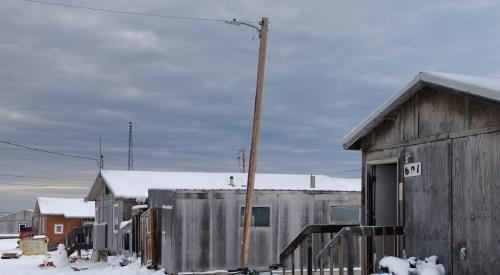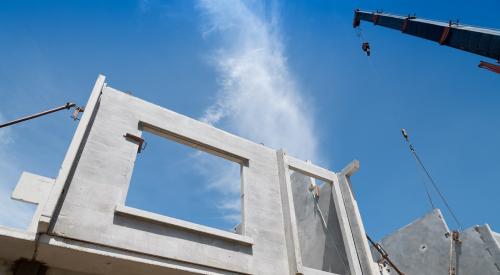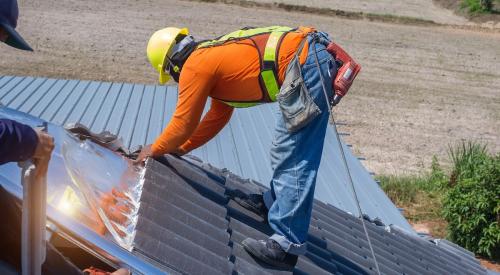Just 500 people live In the remote town of Fort Severn in Ontario, but its intense struggle with a housing crisis is just one of many seen throughout northern Canada. Fort Severn is home to a First Nations community, and it has become a statistic and example of housing downfalls for Canada's Indigenous population. The United Nations estimates that 25% of Indigenous Canadians live in overcrowded conditions and 20% live in homes that need major repairs, reports Fast Company. Two architecture firms are now exploring solutions to better the housing conditions in Fort Severn by developing a new housing typology that can withstand the subarctic climate and the community’s needs.
The project, which requires funding to move on to the building stage, recently won the Social Equity award from the World Architecture Festival. The pandemic put Indigenous communities at a higher risk for COVID-19, and it illustrates the urgent need for a more adaptable, resilient, and inclusive approach to architecture for Indigenous communities across Canada and beyond.
“Even in my community, there is still a huge housing shortage, even though unemployment is low, and there is lots of cash in the community,” says Brian K. Porter, principal at Two Row Architect, a 100% native-owned firm that operates from the Six Nations of the Grand River reserve near Niagara Falls. “We have a chronic housing shortage here, and the challenges get quadrupled when you go to remote communities experiencing the same kinds of things.”
In Fort Severn, the challenges abound. First, there’s the climate: With subarctic temperatures that rise above freezing only from April to October, Fort Severn is one of the coldest communities in Ontario. Then there is the quality of the housing, which compounded with extreme temperatures and cramped living conditions leads to high levels of humidity and mold-infested dwellings. And through it all, there is the lack of consistent federal funding and a colonial approach to housing that persists to this day.
In 1876, the Indian Act “reserved” British land for First Nations and appropriated the rest, creating the so-called reservation system, which continues to bar First Nations people from owning land. “You can’t secure a conventional mortgage when building in an Indigenous community [in Canada],” Porter explains.













